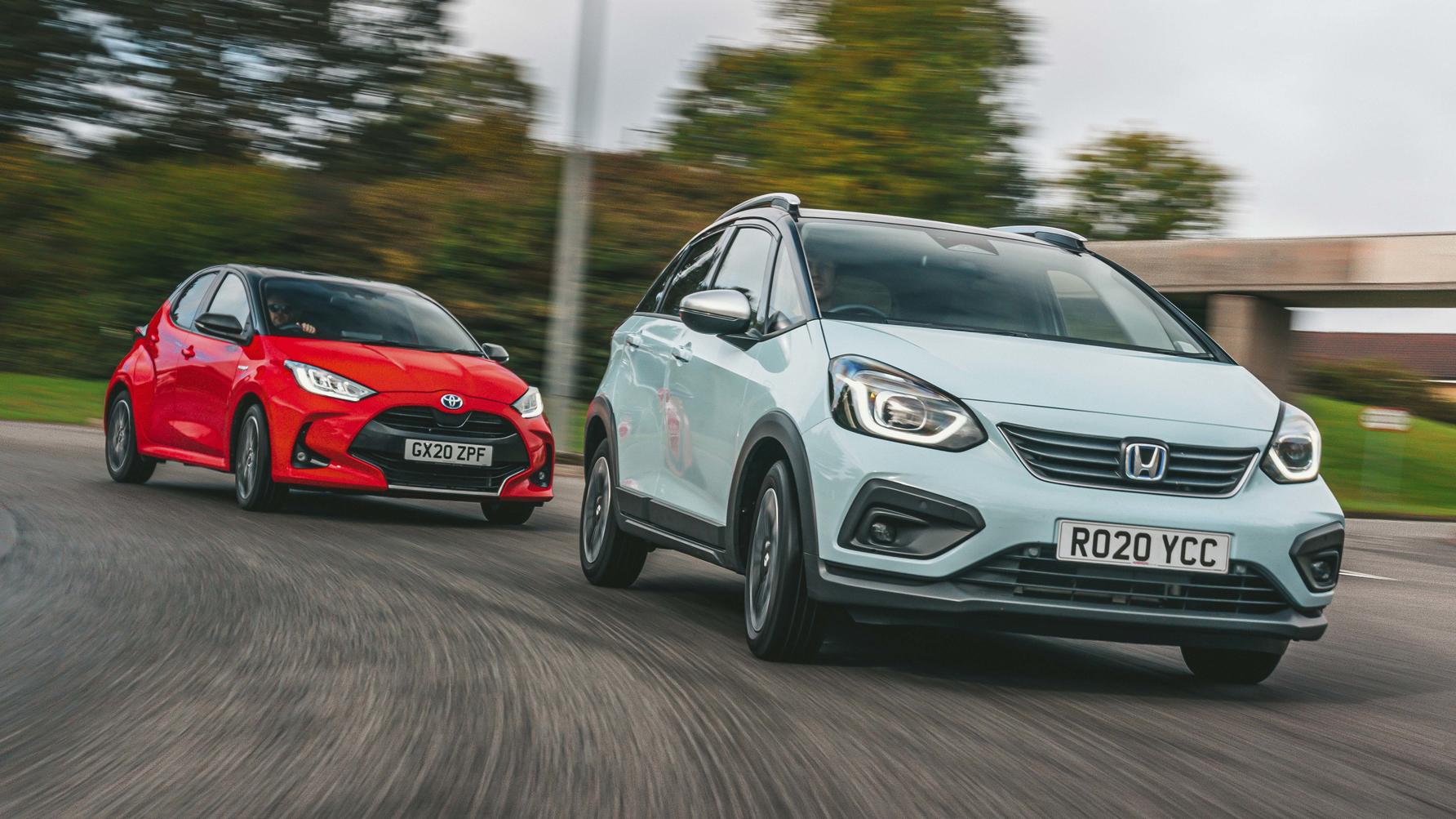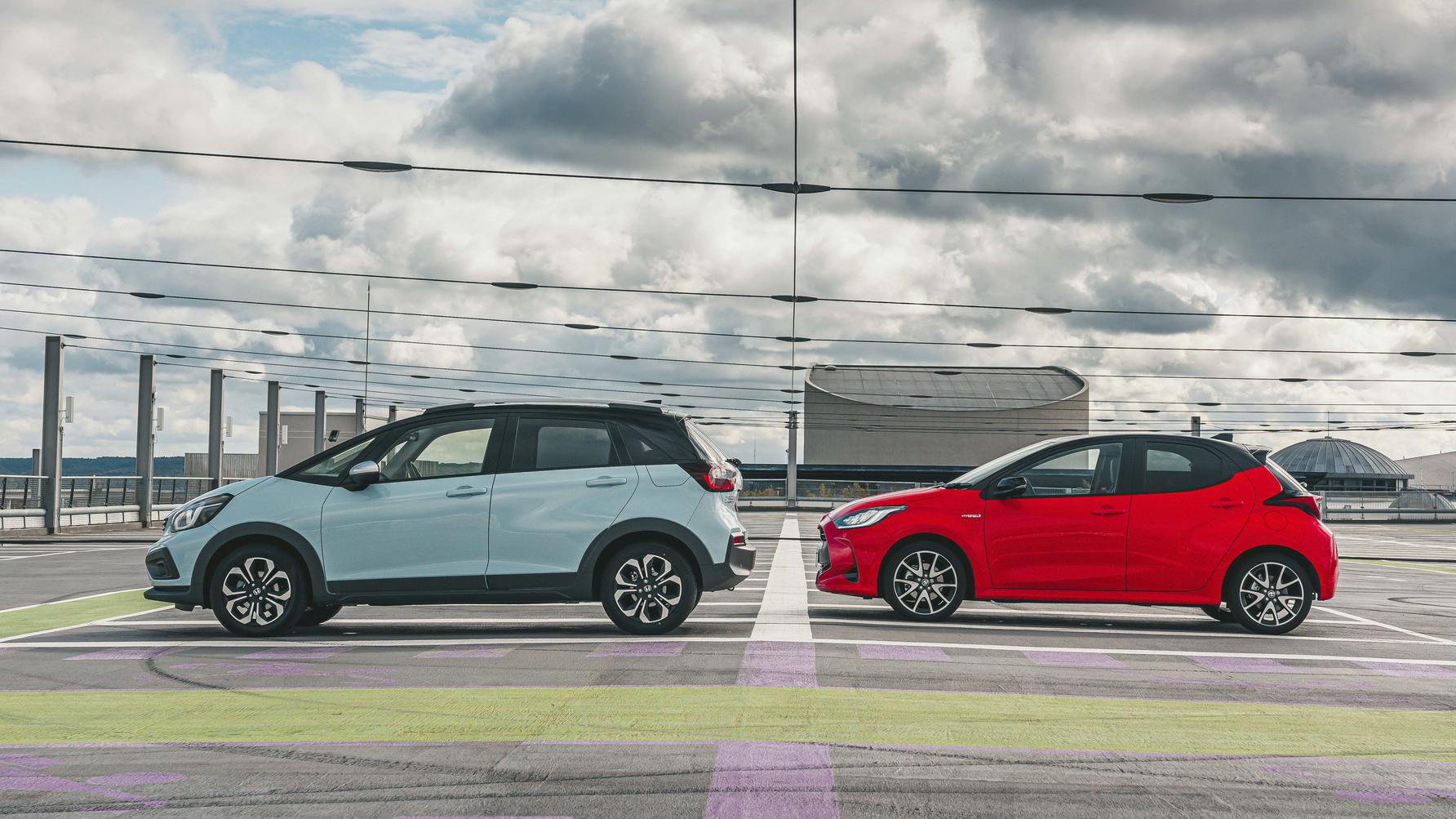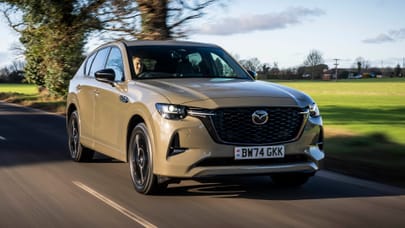
Toyota Yaris vs Honda Jazz Crosstar: hybrid supermini test
Two Japanese carmakers, two wildly different ways to power relatively cheap small cars
The all-electric small car market really has gone bonkers in the past 12 months or so, hasn’t it? Not that long ago, if you wanted something pint-sized and plug-in powered you pretty much had the choice of a Renault Zoe or the considerably more expensive (but extremely cool) BMW i3. Have we reached the fabled ‘tipping point’?
Now your choices span the Honda e, Mini Electric, new-gen Zoe, Peugeot e-208 and the Vauxhall Corsa-e, sparking a style vs substance debate at every fast charger in the land. As we’ve learned, they’re all effective things, but they’re still essentially a bold choice with modest range on the whole – with winter here, you’ll be looking at even fewer miles.
So, what if you’re in the market for an environmentally friendly supermini and aren’t quite ready to take on that all-electric lifestyle? Maybe you haven’t got off-street parking, or perhaps you can’t face the thought of charging stations, charging times and the general complexities of the UK’s EV infrastructure?
Aha, who had paragraph three in the “hint at geriatric owners” sweepstake? We were bound to bring it up in a Toyota Yaris vs Honda Jazz twin test. That’s not to suggest that previous generations of these cars have created an image problem, of course, but they’ve typically been cars you’d advise ageing relatives to buy. We’ll come back to that later.
These are the fourth generations of both the Yaris and the Jazz, and yep, both have gone hybrid-only in the UK. Both are what we’d now consider ‘old-school’ hybrids too – there’s no attempt at virtue signalling with a 48V set-up, but also no ability to plug in and store up meaningful all-electric range.

In the Yaris, Toyota has stuck to what it knows with a 1.5-litre three-cylinder engine and an e-CVT gearbox connected to a 0.8kWh lithium-ion battery and two electric motors. Motor two can propel the car on electricity alone (at speeds of up to 80mph), while motor one is deployed to start the car and to provide charge to the 12V and hybrid batteries. Toyota won’t share a mileage figure for its EV-only range – it’d be nothing more than a mile or two alone – but once charge levels drop or if the driver calls upon a bit more grunt, the internal combustion engine kicks in and combines with the electric motor for a total of 114bhp and 89lb ft of torque.
The Jazz though, seen here in its jacked-up and plastic-arched Crosstar trim, employs a differently wired system. Again, there’s an ICE at the heart of it – a naturally aspirated 1.5-litre four-cylinder – and again it’s connected to a sub-1kWh lithium-ion battery and two electric motors. The difference is there’s no conventional gearbox, and most of the time the engine supplies power to an initial electric generator motor, which in turn supplies power to the electric drive motor, which subsequently drives the front wheels. Phew. It’s sort of a range-extender that’s always extending its range, then. Two Japanese carmakers, two wildly different and complex ways to power relatively cheap small cars, all with maximum fuel economy in mind. Of course, the Jazz also has the capability to manage a couple of miles of EV-only driving while the battery has enough juice, and there’s also a lock-up clutch and fixed-gear transmission that can hook up the combustion engine to drive the wheels at motorway speeds – because that’s apparently more efficient. Crikey.
Honda claims 62.7mpg for the standard Jazz (58.8mpg for the Crosstar) and emissions of 102 or 110g/km of CO2. Those are mightily impressive numbers and we did manage over 52mpg on this test, but Toyota trumps them with a minimum of 65.6mpg and a maximum of 98g/km on the combined WLTP cycle. Over 60mpg is easily achievable in the real world too.
It’s the Yaris that’s more engaging to drive too. The fact it only weighs just over a tonne means it’ll sprint away from the lights with the same vigour as most of the aforementioned EVs. The steering is sharp too – if a little light outside of town – and the brakes have particularly good feel despite their regenerative work. Things do go downhill on the refinement front though. The ride gets crashy on the larger 17-inch wheels and there’s a fair amount of vibration through the pedals. The rev flare that comes with a CVT gearbox also fills the cabin at the first hint of throttle and it doesn’t help that the three-cylinder engine sounds coarse.
Top Gear
Newsletter
Thank you for subscribing to our newsletter. Look out for your regular round-up of news, reviews and offers in your inbox.
Get all the latest news, reviews and exclusives, direct to your inbox.
The Jazz on the other hand trades on its refinement. The engine itself isn’t the smoothest and the revs do see-saw if you put your foot down, but the powertrain never encourages enthusiastic driving and is all the better for it. Despite the fact that both of these manage 0–62mph in nine-point-something seconds the Jazz feels slower off the line, embracing its more relaxed character. Said character is even more evident in Crosstar form. While the whole ‘lifestyle’ thing doesn’t seem to suit the mini-MPV at first look, the loftier suspension means it smoothes over bumps and rolls through corners with a sense of pillowyness not usually found this side of a Citroen C3.
It’s the same story on the inside. In this fully loaded ‘Launch Edition’ Yaris you sit low, surrounded by cheap black plastics and looking ahead onto an optional 10-inch head-up display. The combined cloth and faux leather seats are comfortable, but it almost feels like in an effort to attract buyers Toyota is betraying the recipe that made its big-small car so successful. You sat on top of previous generations with the interior filled with light and space, but the rear seats are now claustrophobic and the 281-litre boot is down on the Jazz’s 298 litres. The Honda provides a much more relaxing environment, with soft-touch minimalist surfaces and elements such as the smiling steering wheel borrowed from the e. The A-pillars have been shifted forward too so there’s good visibility all round, and the Jazz’s trademark Magic Seats are back for maximum practicality. Not had the Magic Seat experience yet? Essentially, because the fuel tank is under the front seats, the rear cushion can be flipped up cinema-style to create some full-height load space – designed solely for transporting wisteria plants home from the garden centre. Who needs a crossover when hatches can be so practical?
Pricing and equipment lists for the pair are remarkably similar, with the Jazz kicking off at a very reasonable £18,985 and the Yaris at £19,910 – although the Crosstar is a fair chunk more at £22,635. Both can be had for £189 per month in base spec, though, so the difference between the two really is down to the character split that Toyota has enforced with this new Yaris. The shoehorning of Prius and Corolla gubbins into a smart-looking small car is impressive and maybe I’m getting old – I even patronised a garden centre recently – but it’s the Jazz that would be the more pleasant car to live with. It’s where I’d put my pension – and my plants.

Trending this week
- Electric
Top Gear's top 20 electric cars












